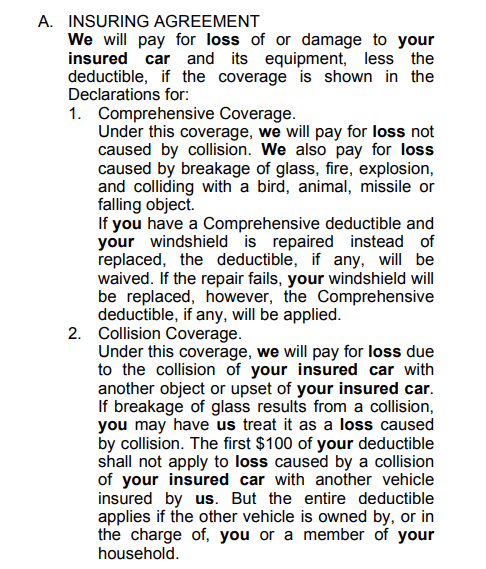Getting My Pacific Prime To Work
Table of ContentsPacific Prime Things To Know Before You Get ThisRumored Buzz on Pacific PrimeSome Of Pacific PrimeOur Pacific Prime DiariesThe Best Strategy To Use For Pacific Prime
:max_bytes(150000):strip_icc()/basics-to-help-you-understand-how-insurance-works-4783595_final-9cf74d5b66d14f88a21ab29ddb290e2d.png)
This is because the information were gathered for a duration of solid economic efficiency. Of the estimated 42 million people that were uninsured, almost concerning 420,000 (about 1 percent) were under 65 years old, the age at which most Americans come to be qualified for Medicare; 32 million were adults in between ages 18 and 65, around 19 percent of all grownups in this age; and 10 million were kids under 18 years old, concerning 13.9 percent of all children (Mills, 2000).
These estimates of the variety of individuals uninsured are generated from the yearly March Supplement to the Existing Population Survey (CPS), performed by the Demographics Bureau. Unless otherwise noted, nationwide price quotes of people without medical insurance and proportions of the populace with various type of coverage are based on the CPS, the most commonly utilized source of quotes of insurance policy protection and uninsurance prices.
Getting The Pacific Prime To Work

Still, the CPS is particularly valuable due to the fact that it produces annual price quotes relatively rapidly, reporting the previous year's insurance coverage approximates each September, and since it is the basis for a consistent set of price quotes for even more than 20 years, permitting evaluation of patterns in coverage with time. For these factors, along with the considerable use of the CPS in other researches of insurance coverage that exist in this report, we rely upon CPS price quotes, with restrictions noted.

The quote of the variety of uninsured individuals broadens when a populace's insurance policy condition is tracked for several years. Over a three-year duration starting early in 1993, 72 million individuals, 29 percent of the U.S. https://www.mixcloud.com/pacificpr1me/. population, lacked insurance coverage for a minimum of one month. Within a solitary year (1994 ), 53 million individuals experienced at least a month without insurance coverage (Bennefield, 1998a)
Six out of every 10 without insurance adults are themselves employed. Although functioning does enhance the possibility that one and one's member of the family will certainly have insurance, it is not a guarantee. Also members of families with 2 permanent wage earners have virtually a one-in-ten chance of being without insurance (9.1 percent uninsured price) (Hoffman and Pohl, 2000).
Pacific Prime Fundamentals Explained
New immigrants represent a substantial proportion of people without medical insurance. One analysis has actually attributed a considerable section of the current development in the dimension of the U.S. uninsured populace to immigrants who arrived in the country between 1994 and 1998 (Camarota and Edwards, 2000). Recent immigrants (those who concerned the USA within the previous 4 years) do have a high price of being without insurance (46 percent), but they and their kids make up just 6 percent of those without insurance nationally (Holahan et al., 2001).
The connection in between medical insurance and access to care is well developed, as recorded later on in this chapter. Although the partnership in between medical insurance and health results is neither direct nor straightforward, a substantial clinical and wellness solutions research literature links medical insurance protection to improved accessibility to care, better top quality, and boosted individual and populace wellness standing.
Degrees of analysis for analyzing the results of uninsurance. It focuses particularly on those without any wellness insurance coverage for any kind of length of time.
A Biased View of Pacific Prime
The troubles encountered by the underinsured remain in some areas comparable to those faced by the uninsured, although they are usually much less extreme. maternity insurance for expats. Uninsurance and underinsurance, nevertheless, entail clearly various policy problems, and the strategies for addressing them may vary. Throughout this research and the 5 reports to comply with, the primary focus is on individuals without wellness insurance policy and hence no support in paying for healthcare past what is available via charity and safety internet organizations
Medical insurance is an effective element impacting receipt of treatment since both clients and physicians react to the out-of-pocket rate of services - https://filesharingtalk.com/members/594499-pacificpr1me. Medical insurance, however, is neither necessary neither enough to obtain access to clinical solutions. The independent and direct result of wellness insurance coverage on accessibility to wellness services is well established.
Others will obtain the wellness care they require even without medical insurance, by spending for it out of pocket or seeking it from service providers that provide treatment free or at very subsidized rates. For still others, wellness insurance coverage alone does not make certain invoice of care due to other nonfinancial barriers, such as an absence of healthcare suppliers in their community, minimal accessibility to transportation, illiteracy, or etymological and cultural distinctions.
An Unbiased View of Pacific Prime
Formal research study about without insurance populations in the USA dates to the late 1920s and early 1930s when the Board on the Expense of Medical Treatment generated a maternity insurance for expats series of reports regarding funding physician office check outs and hospital stays. This concern became salient as the numbers of medically indigent climbed during the Great Anxiety.